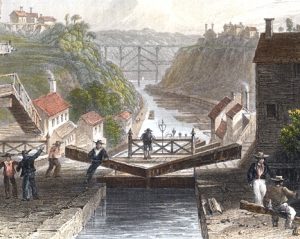New York City, the largest city in the United States, originally began when the Dutch West India company sent about thirty families to live on “Nutten Island”, which is now known as Governors Island, in 1624. The settlers called in New Amsterdam. Before that, however, the Lenape were the first natives to inhabit the area. The first Europeans originally began exploring the area at the start of the 16th century.
In 1626, two years after the Dutch had first colonized the area, Peter Minuit, the settlement’s governor general, purchases Manhattan Island. By that time there were less than 300 people residing in the city, but it began to grow rapidly. In 1760 after the settlement became New York City, there were over 18,000 citizens and it had surpassed Boston as the largest city in the colonies.
In 1664, the British seized New Amsterdam from the Dutch. They renamed it New York City. The city had become a center for anti-british acts, however, in 1760s and 70s. For example, New yorkers closed down all
business in protest of the Stamp Act that had been passed by the British Parliament in 1765. Once the revolutionary war had begun, Britain tried to take New York once more. They succeeded, yet again, in 1776. For seven years to come, New York served as a military base for the British.
In 1810, after the war had ended, New York was one of the country’s most important port cities. In 1817 work had begun on a canal that would go from the Hudson River to Lake Erie. The canal would be 363 miles long. Eight years later the canal had been completed. New York became the trading capital of the country. The city also played a significant part in the cotton economy.
Many immigrants first coming from Germany and Ireland, came to New York City in the 1840s and 50s. The immigrants did many things for the city such as starting businesses and joining trade unions. Tammany Hall, for example, a mostly Irish-American Democratic Club, had become the New York City’s most powerful political machine. The club traded favors such as services, jobs, and other aides in exchange for votes.
By 1895 residents from Staten Island, the Bronx, Queens, and Brooklyn had voted to make new york City into a five borough city in contrast to the five different cities at the time. On December 31, 1897, New York City had a population of more than 2 million and an area of roughly 60 square miles. When the cities joined on January 1, 1898, there were over 3.35 million people in New York with an area of about 360 square miles.



